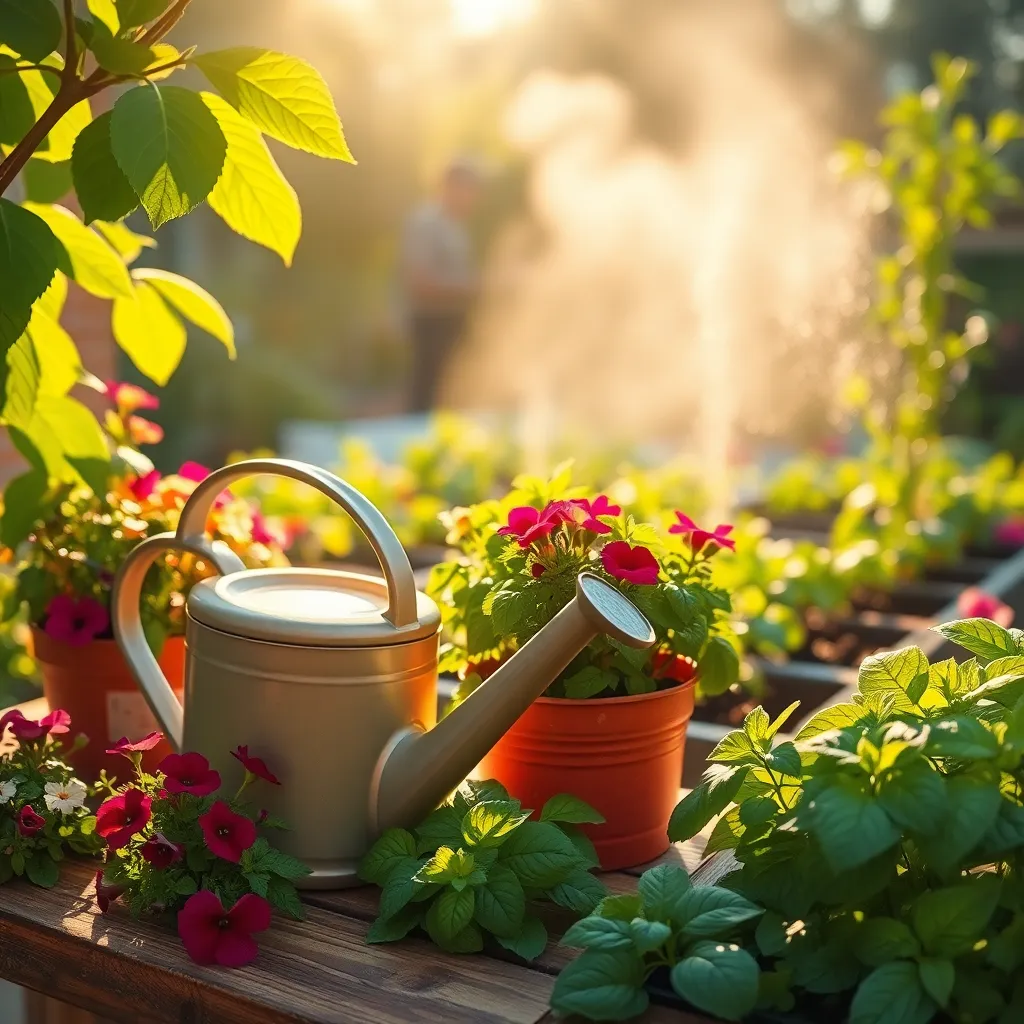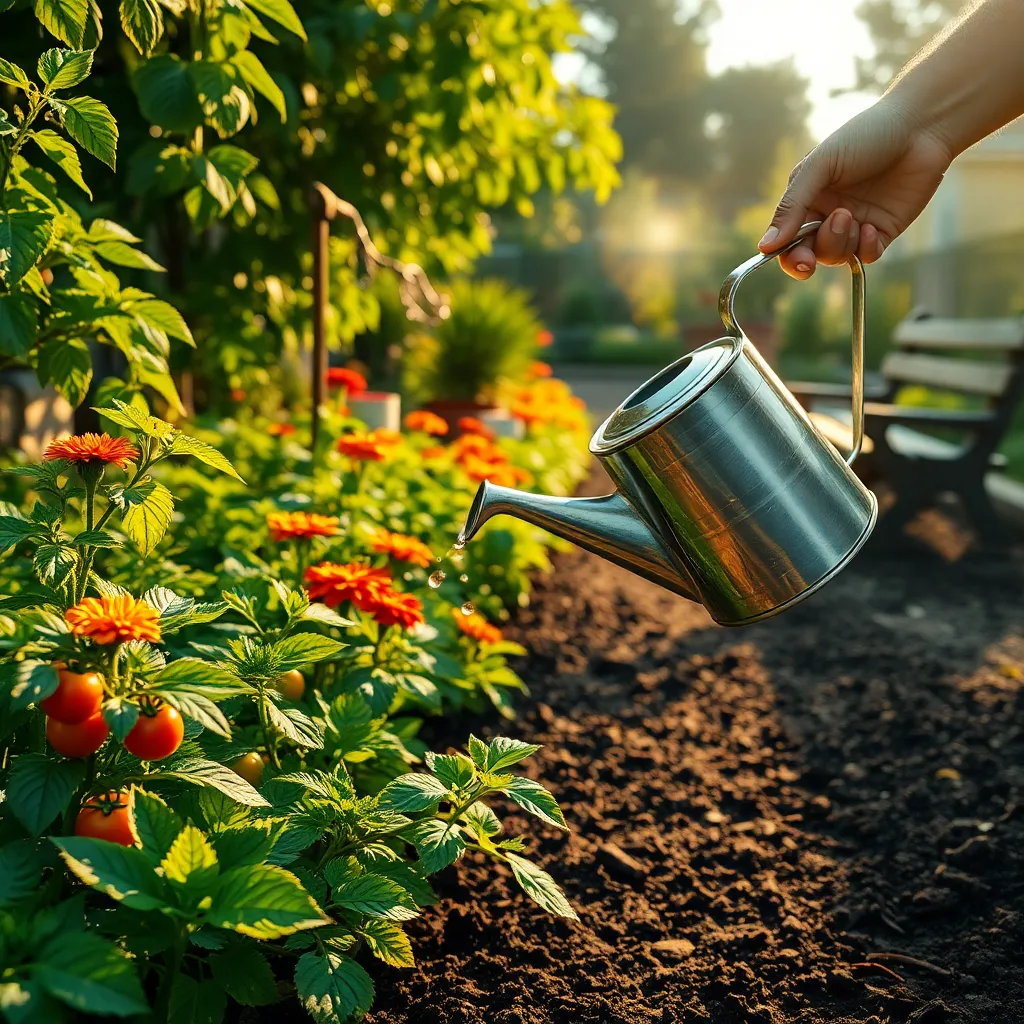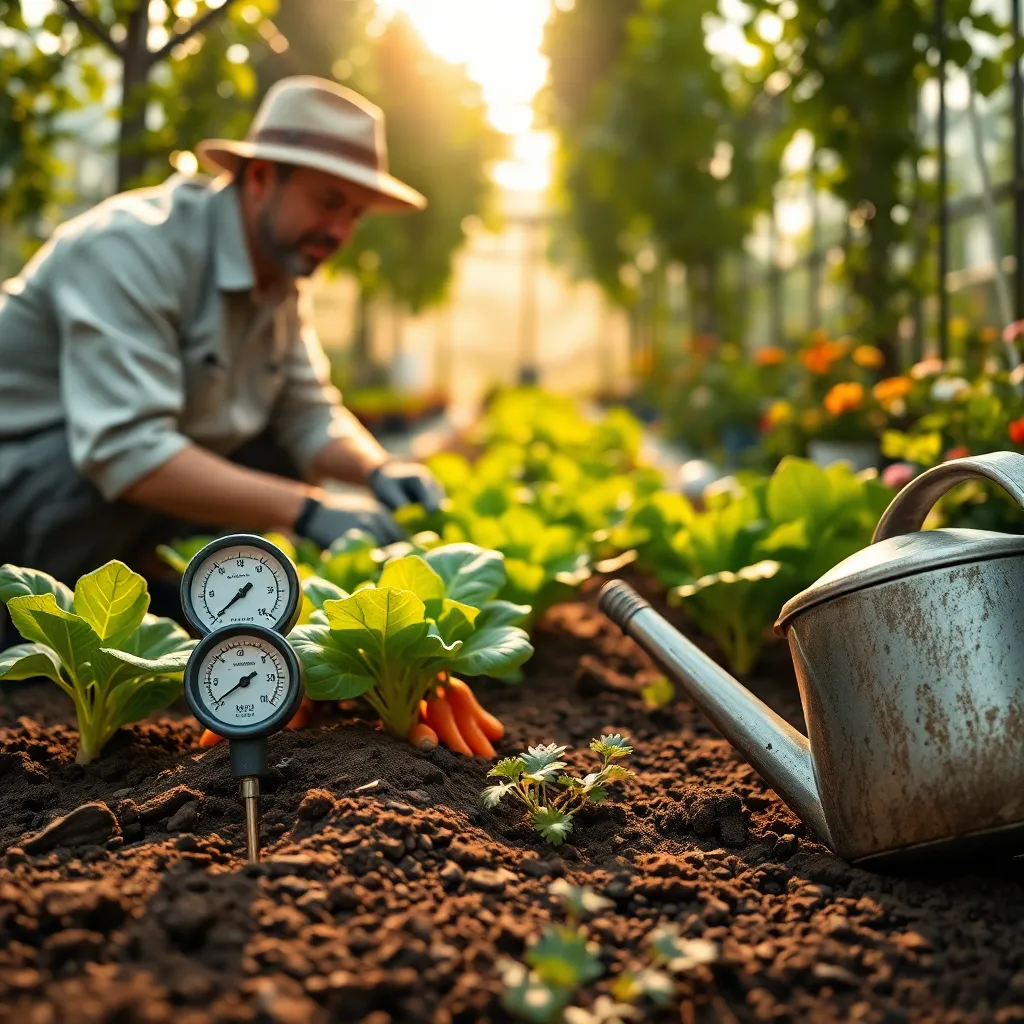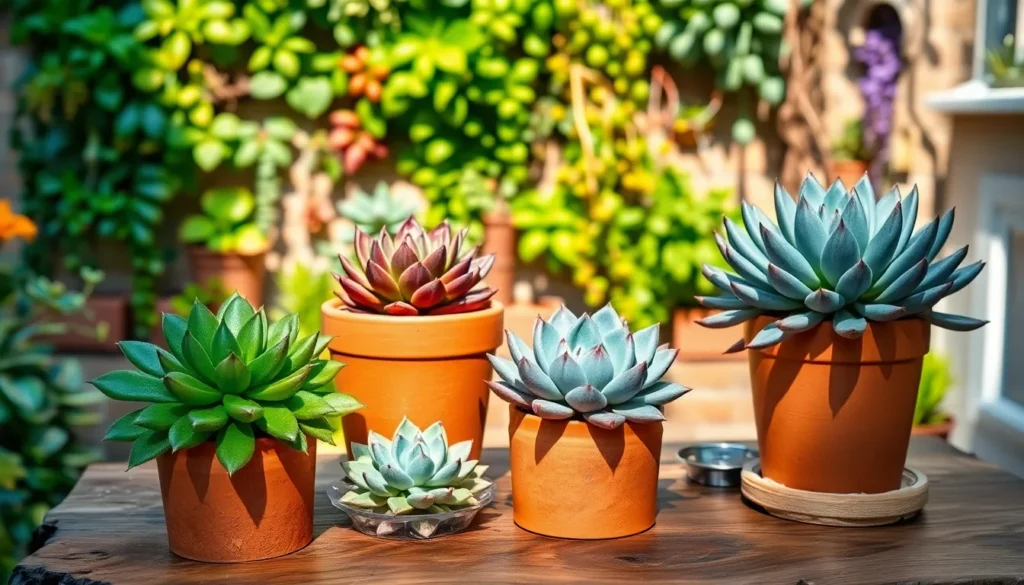In the enchanting world of gardening, water is the lifeblood that sustains our green companions. Whether you’re nurturing a sprawling vegetable patch or a cozy indoor jungle, understanding how to water plants efficiently is key to their health and vitality. For both fledgling gardeners and seasoned horticulturists, mastering the art of watering can be as rewarding as it is essential. With the right techniques, your plants will thrive, and you’ll conserve one of our most precious resources in the process.
Efficient watering goes beyond the simple act of quenching your plants’ thirst; it’s about timing, technique, and the subtle dance of understanding your plants’ unique needs. In this article, we’ll explore the intricacies of watering, from recognizing the signs of thirst to implementing sustainable practices that benefit both your garden and the environment. You’ll discover practical tips and insights tailored to different types of plants, soil conditions, and climates. By the end, you’ll be equipped with the knowledge to cultivate a flourishing garden that rewards your efforts with lush, vibrant growth.
As we delve into the nuances of plant hydration, remember that every drop counts. Our journey will guide you through the wonders of drip irrigation, the benefits of mulching, and how to make the most of rainwater. Together, we’ll demystify common watering myths and provide actionable advice that you can apply immediately, regardless of your gardening experience. So, grab your watering can and join us as we embark on a path to more mindful and effective plant care.
Assess Plant Watering Needs

Understanding your plants’ watering needs is crucial for their health and growth. Different plants have varying requirements, influenced by factors such as species, climate, and soil type.
Begin by identifying the specific needs of the plants in your garden. For example, succulents generally require less frequent watering compared to leafy vegetables, which thrive with more moisture.
Observe the soil condition regularly to assess moisture levels. Insert your finger about an inch into the soil; if it feels dry, it’s time to water, but if it’s still damp, wait another day or two.
For more advanced gardeners, consider using a soil moisture meter for precise measurements. This tool can help you make informed decisions, ensuring that your plants are neither overwatered nor under-watered.
To optimize watering efficiency, group plants with similar water needs together. This practice simplifies your watering routine and ensures each plant receives the appropriate amount of moisture.
Additionally, consider the type of soil in your garden. Sandy soils drain quickly and may require more frequent watering, whereas clay soils retain moisture longer and need less frequent irrigation.
By tailoring your watering approach to the specific needs of your plants, you’ll promote healthier growth and conserve water. Stay attentive to seasonal changes, as plants generally need more water during hot summers and less during cooler months.
Choose Optimal Watering Tools

Choosing the right watering tools can make a significant difference in your garden’s health. Hoses with adjustable nozzles allow you to control water flow and reach different areas efficiently.
For container plants, a watering can with a long spout is essential. This design helps you reach the soil without splashing water onto the leaves, which can prevent fungal diseases.
Consider using a drip irrigation system for larger gardens or vegetable patches. These systems deliver water directly to the plant roots, minimizing evaporation and conserving water.
Advanced gardeners might explore using a soaker hose for even more efficient watering. Soaker hoses are perfect for flower beds, as they provide consistent moisture without overwatering.
Water During Cool Periods

During cool periods, plants require less frequent watering because the evaporation rate is lower. It’s essential to adjust your watering schedule to prevent overwatering, which can lead to root rot and other issues.
Check the moisture level of the soil before deciding to water your plants. You can do this by sticking your finger about an inch into the soil; if it feels dry at that depth, it’s time to water.
Consider the type of soil in your garden, as it affects water retention. Clay soils hold moisture longer than sandy soils, so they require less frequent watering during cool periods.
Watering early in the day is beneficial as it allows the foliage to dry before temperatures drop at night, reducing the risk of fungal diseases. Use a soaker hose or drip irrigation system for more efficient water delivery directly to the roots.
For advanced gardeners, employing water-retentive mulches can help maintain moisture levels. Organic mulches like straw or shredded leaves also provide insulation, keeping roots warm and reducing the need for frequent watering.
Apply Water at Soil Level

Applying water at the soil level is crucial for delivering moisture directly to the plant roots. This method minimizes water evaporation, ensuring that your plants get the most benefit from every drop.
When watering at the soil level, use a soaker hose or a drip irrigation system for optimal results. These tools allow for slow, steady water delivery directly to the root zone, which reduces water waste and soil erosion.
For those using watering cans, ensure the spout is close to the base of the plant, directing water to the soil rather than foliage. This practice helps prevent leaf diseases, such as mildew, by keeping the leaves dry.
Consider the type of soil in your garden; sandy soils may require more frequent watering, while clay soils retain moisture longer. Adjust your watering schedule based on the soil’s ability to hold moisture and the specific needs of your plants.
Advanced gardeners might consider incorporating mulch around their plants. Mulch not only conserves moisture by reducing evaporation but also keeps the soil temperature stable and suppresses weeds.
Monitor Soil Moisture Regularly

Monitoring soil moisture is crucial for efficient plant watering and optimal growth. Regular checks help prevent both underwatering and overwatering, which can be detrimental to plant health.
Using a moisture meter is a simple and effective way to monitor soil moisture levels. Insert the probe into the soil near the plant’s root zone to get an accurate reading, ensuring it is neither too dry nor too wet.
Alternatively, you can use the finger test by inserting your finger about two inches into the soil. If it feels dry at this depth, it’s time to water; if it’s still moist, wait a few more days before checking again.
For more advanced gardeners, consider the type of soil you have, as different soils retain moisture differently. Clay soils, for instance, hold water longer than sandy soils, which may require more frequent monitoring and watering.
Conclusion: Growing Success with These Plants
In nurturing both plants and relationships, the parallels are striking and profound. We’ve explored five essential concepts: the importance of consistent care, understanding unique needs, the value of communication, the role of patience, and the impact of a supportive environment. Just as plants thrive on regular watering and attention, relationships flourish with consistent and thoughtful care. Recognizing and respecting the unique needs of our partners, akin to understanding different plant species, strengthens our bonds. Clear communication nourishes relationships, much like sunlight for plants, while patience allows growth at its own pace. Creating a supportive environment fosters a thriving connection.
As a practical next step, take a moment today to observe your relationship. Identify one area where you can apply consistent care or clear communication, and commit to making a small, positive change. Remember, growth is a journey, not a race.
I encourage you to bookmark this article as a reference for nurturing your relationships. By doing so, you’re investing in a future filled with thriving connections. With intentional care and understanding, your relationships can blossom into lasting success. Keep this guide close, and let it inspire your journey toward deeper, more fulfilling relationships.







